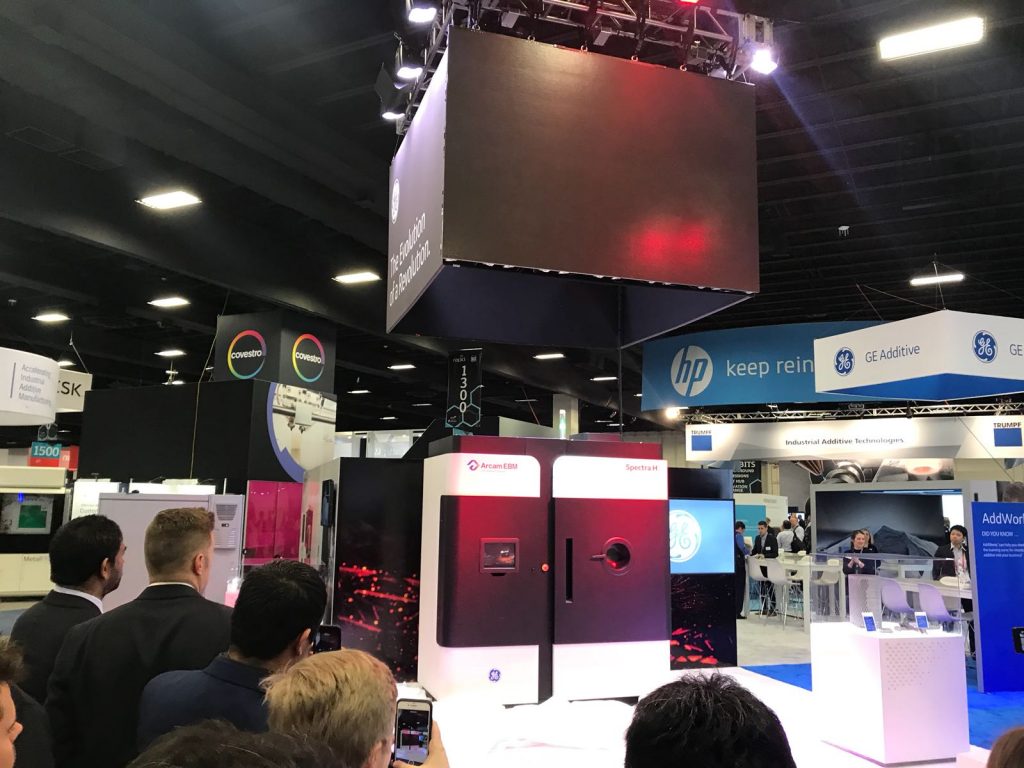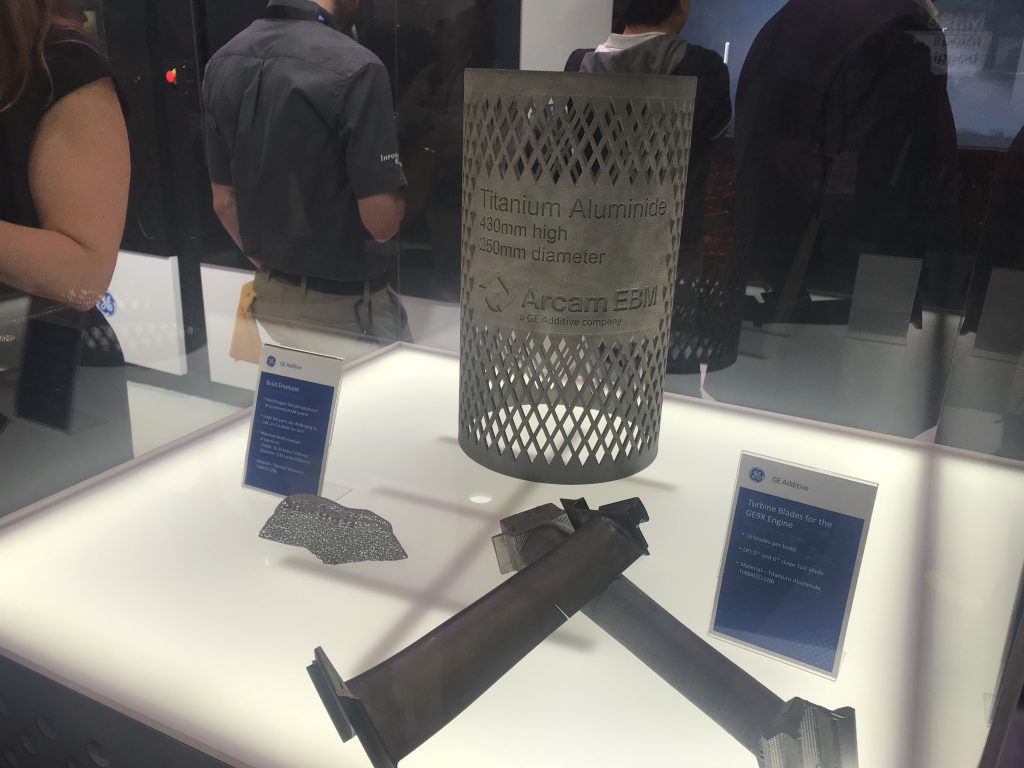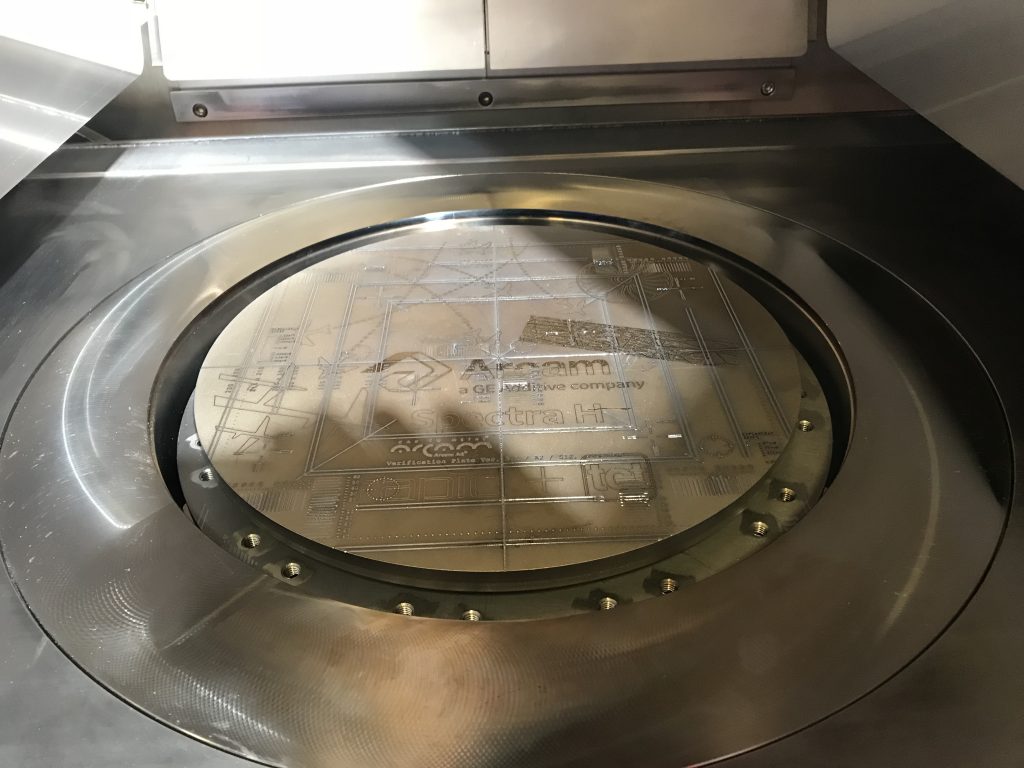Annika Ölme is Vice President of product management at metal additive manufacturing company Arcam AB. Now a subsidiary of GE Additive, Arcam specializes in electron beam melting (EBM) technology.
The company released it’s latest 3D printer, the Spectra H, at RAPID + TCT 2018. At the show, I met with Ölme to learn more about the technology inside this latest EBM machine some of which has been 10 years in the making.
The product of decades of experience in EBM
In the presentation of the Spectra H, GE Additive and Arcam are keen to assert that this latest release is a complete solution for additive integration into an Industry 4.0 factory model.
“Actually Spectra H is not really a machine it’s a system,” explains Ölme, “and what we have next to the machine is a powder recovery system […] there is also a sieve, there’s a trolley and number of auxiliary equipment that makes it into a whole system.”
In addition, every effort has been made to ensure that the process is automated, and easily links into to a factory’s system management software.

Spectra H development was conducted in close collaboration with a number of Arcam’s existing customers and parties that have subsequently become the first customers of the system.
In terms of a production timeline, Ölme says, “It depends how you count, because of course some of the things we have put in here have been researched for 10 years. But if you look at it from a product development time I would say, it’s a number of years,”
“When do you start with something that’s, for us at least, a technology that is at our heart? And our soul. That’s what we have been doing for 20 years.”
3D printing for crack prone metals
One of the main features of the Spectra H is it ability to work with previously challenging, high temperature materials. Titanium Aluminide, reknowned for cracking when melted and worked at height, is one of the Spectra’s launch materials.
This capability was demonstrated, to great interest from visitors at the GE Additive booth, in a thin-walled cylinder made to the Spectra’s max volume (250 mm in diameter by 430 mm high).
For reference, TiAl and other crack prone metals are incorporated in the Spectra H at temperatures exceeding 1000°C.

A future for in-situ part certification
Control is enhanced in the Spectra H with two integrated build cameras. The first is the Layer Cam, which Ölme explains, “can take a picture, which can be extracted from our user interface, so you can see what [each layer] looks like, and of course you can draw conclusions of the material properties from that.”
The second control is the X Cam which is essentially a kind of SEM microscope within the machine. Ölme explains, “The main use of the X Cam today is for calibration. Basically what it does, is that it’s like sensor for the x-ray backscatter so you can analyze the beam quality, let’s say, from that perspective. And that’s what we’re using in the automatic beam calibration.”
Ölme confirms that melt pool behaviour can be monitored “to some extent” using this technology. The goal with cameras like this however, is to eventually be capable of in-situ qualification of 3D printed parts within the machine itself, cutting down on the certification challenges faced by the industry at large.

Future trends in metal AM
Through GE Additive, Arcam is now linked to a wealth of projects, especially within the aerospace and defense sectors. In a 2017 MoU, GE, Arcam and Concept Laser all entered into an additive industrialization deal with Swiss listen technology company Oerlikon. Medical device manufacturing companies Exactech and Lima Corporate are also among Arcam’s existing customers.
Though the company have yet to confirm details of Spectra H customers, Ölme assures me that “the interest is quite high” and GE has already had a number of orders for the system.
Looking at the industry broadly Ölme comments that, “I think that, one trend that we see is really an explosion of laser companies. And that I think it shows the interest of various different companies to enter the additive business,”
“If you look at electron beam, however, we’re kind of alone if that, so the trends are kind of what we do. But what we can see with our customers is really more customers going into serial production, and taking it from prototype to serial production.”
To receive more exclusive content from 3D Printing Industry, sign up to our daily newsletter, follow us on Twitter, and like us on Facebook.
Search and post 3D Printing Jobs for opportunities and new talent across engineering, marketing, sales and more.
Cast your vote in the 2018 3D Printing Industry Awards before closing next week.
Featured image shows Annika Ölme, Vice President of product management at metal additive manufacturing company Arcam AB. Photo by Beau Jackson



